Grey Dwarf Hamsters: Guide for Care, Diet and Unique Traits
The grey dwarf hamster (Nothocricetulus migratorius, historically listed as Cricetulus migratorius) is a small, hardy rodent native to Eastern Europe and Central Asia. This guide explains their natural history, basic care needs, housing, diet, common health issues and breeding essentials to help owners provide safe, evidence-based care.
If you are thinking of getting this pet or already have one, this article will provide a complete guide about their health and how these animals become happy.
Further, where do the Grey dwarf hamsters come from, and what foods are best for them? How do you set up their habitat? This guide has all the information you need. Join and explore the fascinating world of these small creatures!
Understanding Grey Dwarf Hamsters
It is always recommended to know before you leap for keeping Grey Dwarf hamsters as your pet. Below is some important factual information you need to consider if you are interested in learning more about these animals.
Origin and Natural Habitat
Most of these animals come from cold areas of northern Asia. They are well-adapted to the harsh climates of places like Mongolia, Kazakhstan, and Siberia, which is why these Grey dwarf Hamsters are called Cricetulus Migratorius.
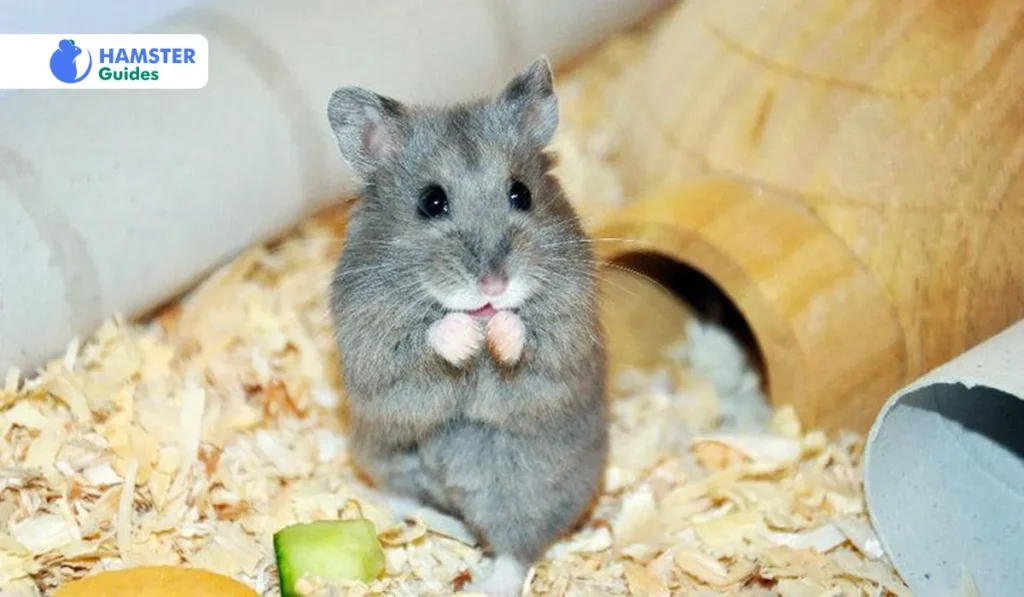
It lives in dry grasslands, steppes and semi-deserts and constructs deep burrow systems for nesting and food storage. Note: taxonomic treatments have shifted; the species is currently listed in recent references under Nothocricetulus migratorius (synonym Cricetulus migratorius). They protect themselves both from predators and extreme temperatures. Like other breeds, they are Nocturnal species. They are mostly active at night to find their food and sleep during the day.
Read More: Can Hamsters See in the Dark?
These hamsters have evolved to thrive in the cold climates in their native habitats. In addition to providing insulation, their thick fur coat protects against owls, foxes, and snakes, among other predators. With their excellent sense of smell, Grey dwarf hamsters can find food in their underground tunnels, which are dark and hostile environments. This makes them perfect for existence in the wild.
Physical Characteristics of Grey Dwarf Hamsters
The Grey dwarf hamster has a short tail and black eyes. It is normally small, approximately three to four inches long. It is a great climber because of its short legs and stocky build. It has a white belly and Grey fur. There are many combos, such as tan and white and black and white. It has fluffy and thick fur, which provides it with insulation in winter.

Although they are small, Grey dwarf hamsters can run and jump quite fast. Their whiskers help them sense their environment as they navigate tunnels and crevices to find food. These hamsters instinctively hoard resources in the wild, so they store food for later consumption in cheek pouches.
Lifespan and Health of Grey Dwarf Hamster
Grey dwarf hamsters live approximately 1.5 to 3 years, but they can sometimes live up to four years if given proper care. A balanced diet, clean living conditions, and regular veterinary care are crucial to ensuring your hamster’s health. Veterinary care is necessary if your pet shows signs of illness, like loss of appetite, lethargy, or abnormal behavior.
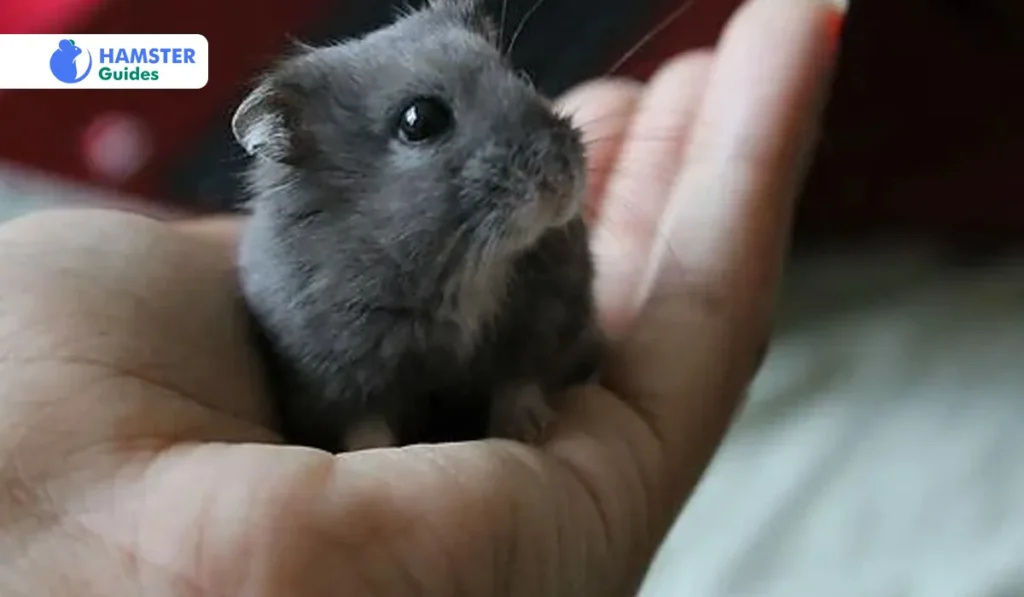
Regular exercise can also maintain the physical and mental well-being of Grey dwarf hamsters. They will be happy if you provide them with a wheel or tunnel in their habitat so that they can mimic their natural burrowing behavior and remain active.
Since the Grey hamster’s teeth grow continuously daily, better-quality chew toys will help prevent dental issues. Also, a better environment will help them live healthy and happier lives.
Adults typically measure about 85–150 mm (≈3.3–4.7 in) head-to-body and weigh roughly 20–58 g, with sandy-grey fur and a pale belly. In captivity, with good diet and veterinary care, expect 1.5–3 years on average; some individuals may reach ~4 years. Replace any conflicting numbers in your page with these ranges.
| Aspect | Information |
| Friendliness | Grey dwarf hamsters become happy with the right handling and socialization. They experience interacting and may form a bond with their owners. Some of these Hamsters are shy or reserved. |
| Lifespan | Usually, he is 1.5 to 2.5 years old, but his lifespan depends on care and genetics. |
| Diet | Primarily commercial hamster food (grains, seeds, pellets) with fresh vegetables and sometimes a protein source (cooked chicken, mealworms). Fruit and other treats should be given in moderation. |
| Personality | Inquisitive, active and playful. They enjoy exploring their surroundings and benefit from enrichment objects such as tunnels and toys. Regular gentle handling will help them become friendly and sociable. Some may be more shy. |
| Habitat and Care Needs | A suitable cage with bedding, tunnels, wheels and enrichment toys is required. Regular cleaning and access to fresh water are essential. |
| Health considerations | Chew toys and a proper diet are important as they are prone to dental problems. Watch for signs of illness and seek immediate veterinary attention if necessary. |
| Socialization | Social animals can benefit from living with like-minded cage mates, but same-sex pairings are recommended to prevent reproduction. |
| Grooming | Self-care is typical. Gentle brushing from time to time can help remove loose fur. |
| Activity Level | Very active, especially at night. Provides opportunities for exercise and mental stimulation. |
| Training | You can train to a limited extent using positive reinforcement methods. |
| Common Varieties | The common breed Grey (Russian) dwarf hamster is one of several species belonging to the genus Phodopus, including the Campbell hamster and the Winter White dwarf hamster. |
Choosing Your Grey Dwarf Hamster
Once you have decided to choose a Grey Dwarf hamster as your pet, it is good to comprehend the following points: it will help your hamster be happy, healthy, and live longer.
Selecting a Healthy Grey Dwarf Hamster
When choosing a Grey dwarf hamster, looking for signs of good health is crucial. Opt for a hamster with bright, clear eyes, clean ears, and a glossy coat. Avoid hamsters that appear lethargic, show signs of illness, or have matted fur.
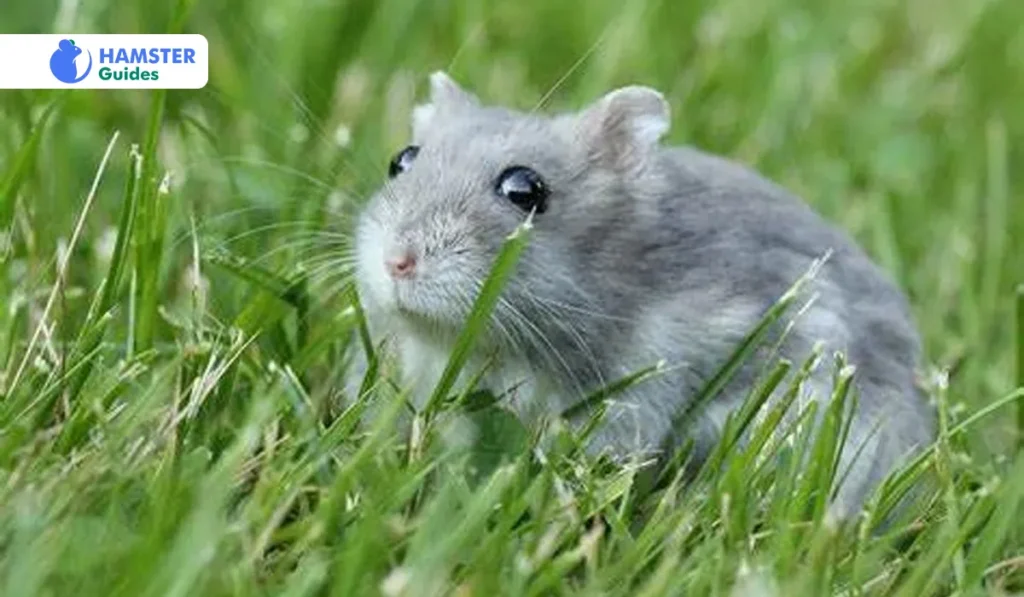
Furthermore, buying your pet hamster from a reputed pet store or a good breeder is a good idea. Hamsters are easy to handle and can socialize. Always observe hamsters’ behavior at pet stores before finally buying them.
Read More:How Long Can Hamsters Go Without Water?
Another sign of a healthy hamster is that it is active, friendly, and curious. Hamsters move around in their cages and show interest in their environment. If you observe that the hamster is aggressive or shy, it might have health issues or be stressed, so avoid buying it.
Understanding the Nature of Grey Dwarf Hamsters
Grey dwarf hamsters are well known for their special behaviour. Grey dwarf hamsters are primarily nocturnal/crepuscular. Understanding their behaviour is important to giving them an appropriate place to live. Their wild behavior (foraging and tunnelling at night) explains why they need deep substrate and a quiet daytime environment when kept as pets. Social tendencies vary by species and context; some dwarf hamsters tolerate same-sex groups when introduced early, but always monitor for aggression.
Keeping them in their habitat is good because they want to live alone. Moreover, hoarding food in their cheeks is another unique quality of hamsters. So it’s normal for them to store food in their cheeks.
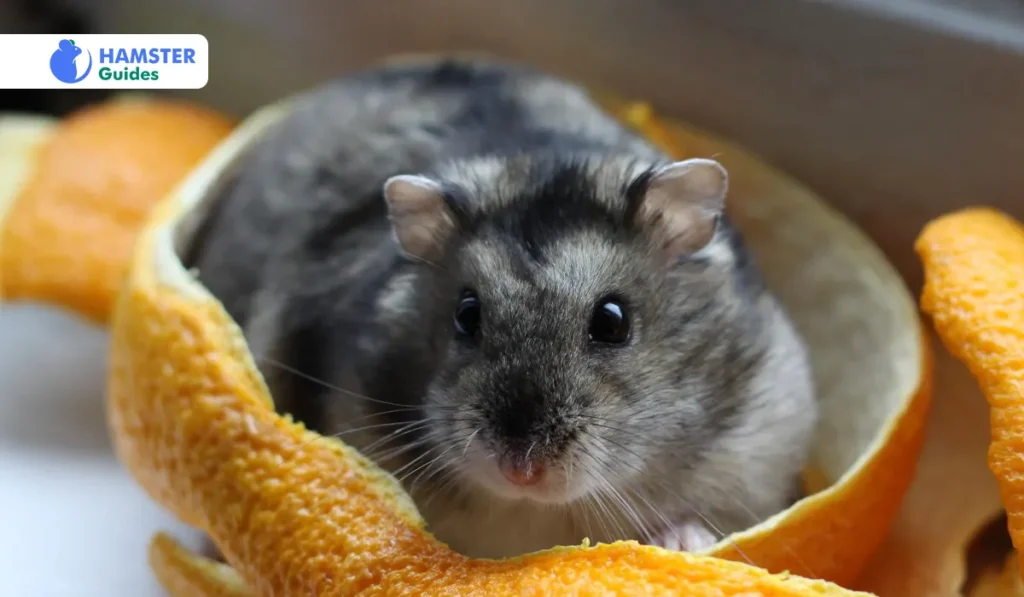
Being a crepuscular animal, Grey dwarf hamsters are more active at dusk and dawn. To feel safe and comfortable now, provide them with a quiet, dim-lit environment. Arrange some hiding spots and tunnels in their cages. It helps them behave like they do in the wild.
Read More: The Dwarf Hamster Lifespan: Key Facts and Care Tips
Creating an Appropriate Environment for Grey Dwarf Hamsters
An appropriate environment is very important for Grey Hamsters. It is necessary for their overall health and well-being. Following are some factors to consider when you are going to build their habitat:
Size and Setup of Cage
Grey dwarf hamsters’ health and happiness depend on a proper habitat, so provide them with a spacious and enjoyable home. The cage must be at least 20 x 12 inches, but bigger is always preferable.
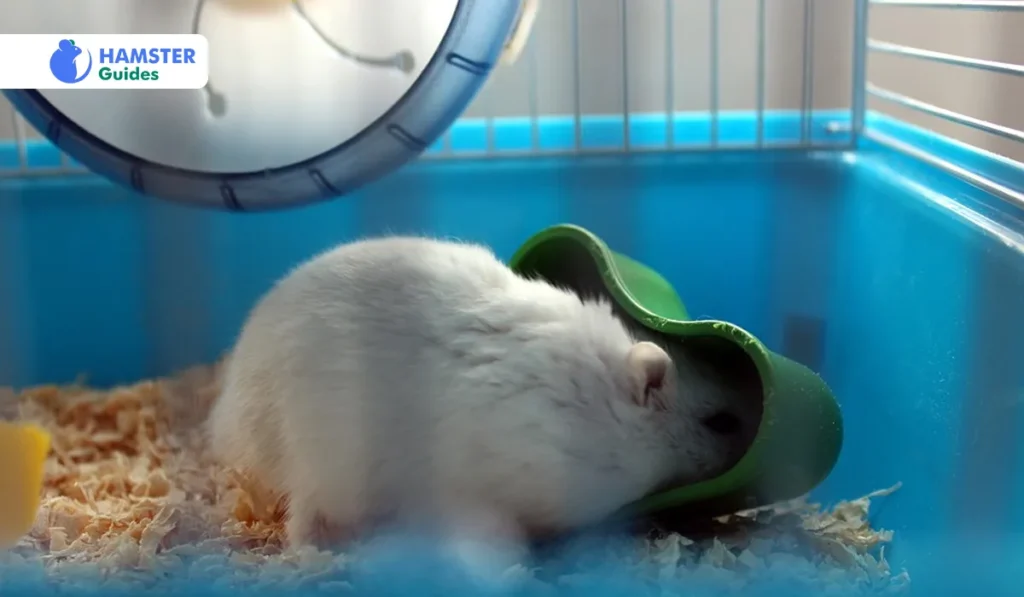
Add different platforms and stairs in the cage so the hamster can climb up and explore the area. The cage must have tight safety bars so the hamster can’t escape. Then, place the cage in a quiet area away from strong winds and direct sunlight.
Adding treats like tunnels, chew toys, and wheels in the cages is beneficial for hamsters. It helps them explore and exercise, not just for fun but also for their mental and physical health.
Nesting and Bedding Materials For Your Pet
Grey dwarf hamsters need cozy and safe bedding to sleep. Aspen and paper are good choices to make their bedding. Because they are absorbent and can maintain the room’s odors, do not use cedar or pine for this purpose.
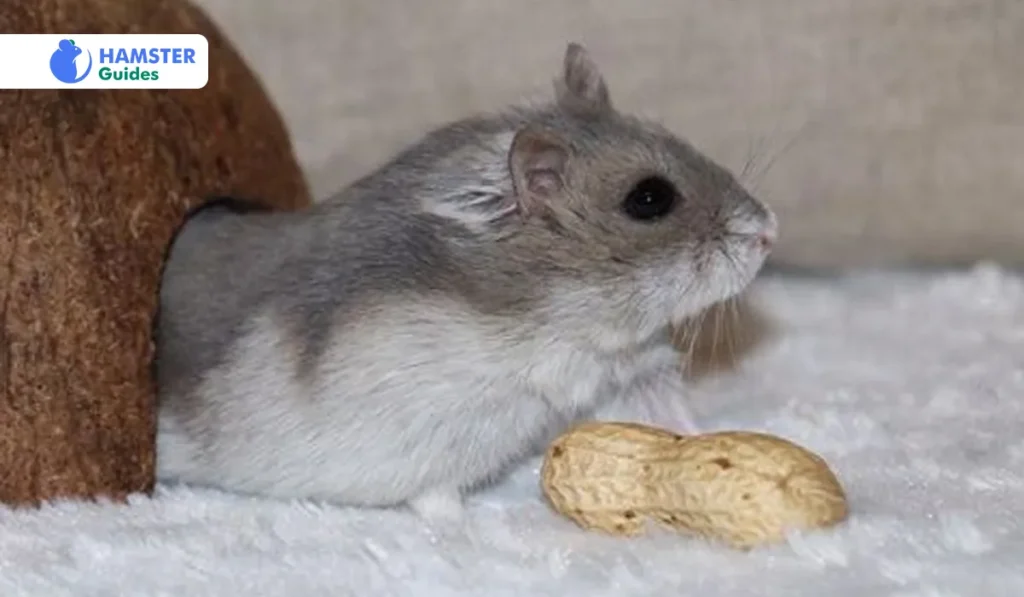
They are not suitable for hamsters and can cause respiratory issues. Use soft materials, such as fleece, torn paper, or hay, to make nesting materials for your hamster. This will allow them to build cozy nests where they can rest and sleep.
Keep your hamster’s cage clean and hygienic by regularly cleaning and replacing the bedding. To prevent bacteria and odors a complete bedding change should be done at least once a week in addition to spot cleaning.
How Often Should I Clean the Cage?
It is essential to clean your grey dwarf hamster’s cage regularly. This is important for keeping it hygienic. Daily spot cleaning should include removing dirty bedding and waste. Once a week, thoroughly clean and sanitize the cage. Regular cleaning prevents bacteria buildup and will keep your hamster healthy and relaxed.
Moreover, when you clean your pet cage, remember that the chemical you use for sanitizing should be safe for the hamster’s overall health. Avoid strong or harsh chemicals because they could be unsafe or harmful for your pets. Use organic alternatives like vingers or water solutions for cleaning purposes. Hamster health should always be the priority for pet ownership.
Cage and Habitat Requirements
| Aspect | Information |
| Cage Size | Dwarf hamsters should have at least 360 square inches of floor space. Larger size for couples and groups. |
| Bedding | Made of paper or aspen shavings. Avoid cedar and pine trees, as they can be harmful |
| Enrichment | Provide tunnels, wheels, hiding places, chew toys, etc for mental stimulation. |
| Cleaning | Cleaning the cage and changing the bedding regularly to ensure hygiene. |
| Temperature | Maintain the environment between 18-24°C (65-75°F) to ensure comfort. |
| Lighting | Natural light during the day and darkness at night to match the hamster’s natural behavior. |
Nutrition and Diet of Grey Dwarf Hamsters
A healthy and fresh diet promises to have an active and healthy grey dwarf hamster. The following tips below can help you to achieve it:
Preferred Foods
A balanced diet is very important for Grey hamsters. Their health and longevity depend on it. When you offer food to your pet, make sure that it is primarily high-quality supplemented pellets with fresh vegetables, occasional treats, and fruits. Choose pellets that are specifically designed for hamsters.
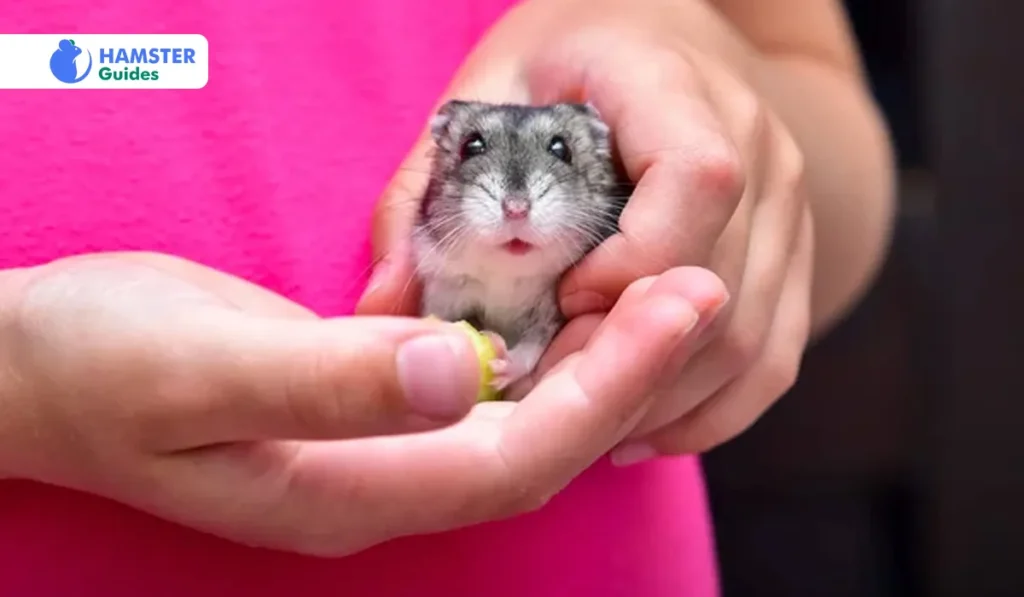
Avoid those marketed for other tiny animals. Provide a variety of fresh veggies, such as carrots, leafy greens, and broccoli as well as tiny portions of fruits like berries and apples.
Grey Hamsters have a unique digestive system. When you give pellets, you should add energy and fiber. This includes barley and oats, which are good for hamsters’ overall health. Fresh herbs, such as parsley and coriander, are delicious and full of nutritious meals.
Foods to Avoid
You should avoid a certain group of foods when feeding a dwarf hamster, even though you want to provide a varied diet. These may include chocolate and sugary cereals or candy. Citrus fruits and onions also harm them because they can cause digestive issues. Also, remember not to feed them anything toxic such as grapes, or avocados, raisins or garlic.
Read more: How Long Can Hamsters Go Without Food?
The owner needs to be aware of these risk factors for his hamster’s health, including almonds and peanuts for their high-fat content. These can lead to obesity, among other health problems in hamsters. Your cute little friend also should not be fed processed foods like cookies and crackers since they do not have any nutritional value and may even harm your pet in the long run.
Diet and Nutrition
| Aspect | Information |
| Basic Diet | Commercial hamster food includes grains, pellets, and seeds. |
| vegetables | It includes carrots, kale, spinach, and broccoli. |
| Fruit (treats) | Occasionally give small pieces of apples, pears, bananas, etc. as treats. |
| Protein Sources | Cooked chicken, mealworms, or tofu can be fed in moderate amounts for protein intake |
| Water | Always provide fresh water available in a drinking bottle or bowl. |
Handling and Socialization Grey Dwarf Hamster
To make your pet comfortable, you must adopt certain methods and behaviors to make this wild animal a docile domestic pet.
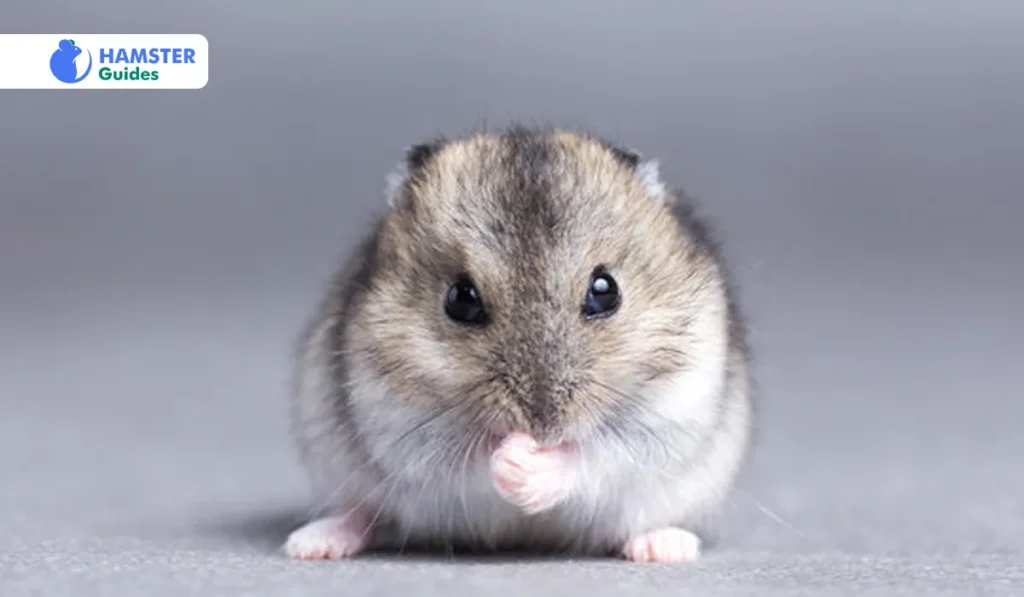
Taming Your Hamster
At first, Grey dwarf hamsters are very reserved and shy. But with the passage of time and care, they become friendly and learn to enjoy human company. If you want to get comfort with your pet.
Firstly, you need to sit near their cage. Then, speak politely. Present your hand gradually by giving them sweets or allowing them to smell your presence. Hold them by your hand and avoid suddenly moving.
Read More: Are Hamsters Nocturnal?
Grey Hamsters have a unique Personality. They take time to get comfortable with human company. Some hamsters can easily become friends, while others require time and patience. Building friendship bonds and positive interactions with these animals is important.
Interaction and Playtime
For the well-being of your Grey dwarf hamster, give them opportunities to play and explore outside their cage. Make a play area so they can be free under supervision. Offer some toys such as tunnels, exercise wheels, and chew toys to entertain them.
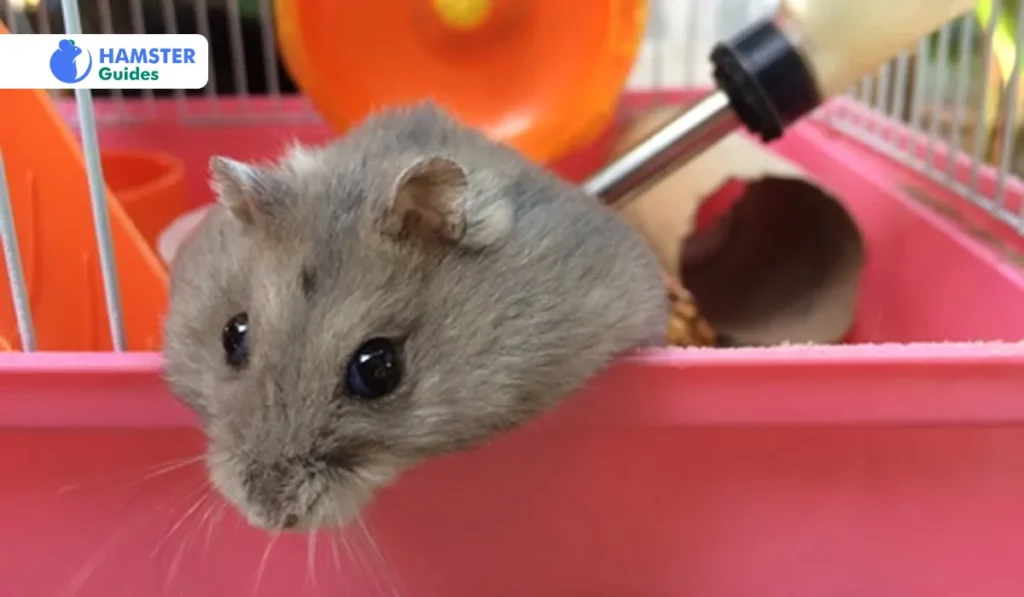
You should regularly let your pet have playtime outside its cage. Ensure that the environment is safe and that there are no potential hazards. Exploration is natural to hamsters; thus, creating an enriching environment with many toys and activities will help prevent boredom and encourage exercise.
Moving around the toys and reorganizing the play area would keep it interesting for your hamster. Furthermore, providing tunnels and hiding places can help your pet’s mind by mimicking its natural habitat.
Common Health Issues
There are some common health issues for which you need to be vigilant for making appropriate and timely decisions. Prevention is better than cure.
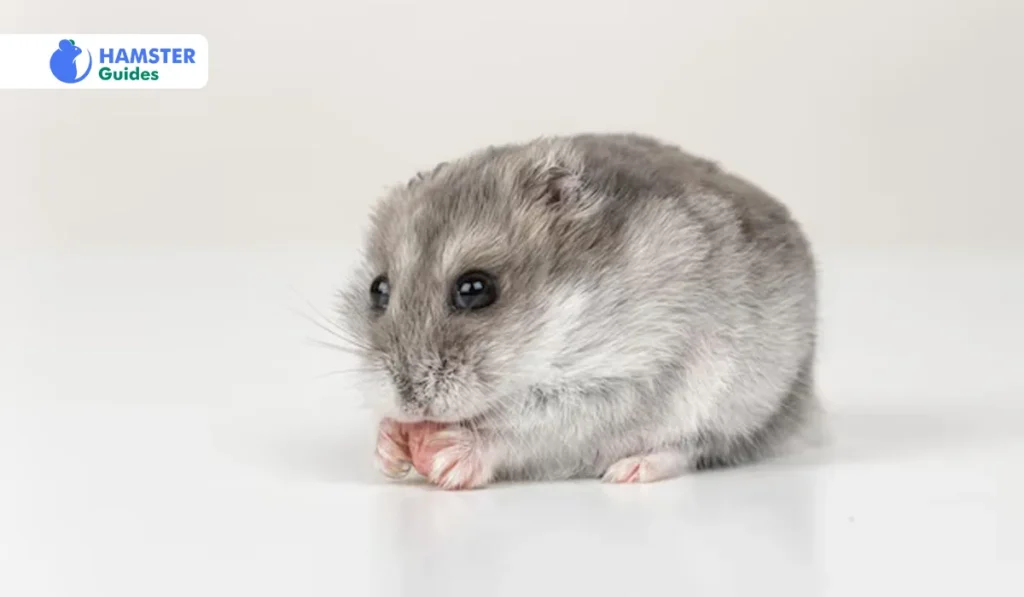
Preventive Care
Proper preventive care will go a long way in safeguarding the health of your Grey dwarf hamster. Your hamster needs a clean cage, so clean it every week, wipe all the feces, and change dirty bedding. Also, always keep an eye on their food intake and give them fresh water daily.
Monitor them for unusual signs like lumps, pain, or other health issues. Make an appointment for routine examinations with a small animal’s vet. This will help you diagnose their health problems quickly.
A balanced and nutritious diet is also essential for Grey dwarf hamsters. Feed your hamster fresh vegetables, fruits, and high-quality pellets. Avoid giving sweet treats and foods that are harmful to the digestive system. Hamsters need proper nutrition to stay healthy and happy.
Signs of Illness
Recognizing disease is very important for grey dwarf hamsters. If there are any symptoms, such as excessive weight loss or gain, fur loss, diarrhea, or behavior changes, they should check up with a veterinarian as soon as possible. Identifying the symptoms will show a positive outcome.
Moreover, Provide a good environment, like tunnels or toys. To prevent their depression and torment, spend time with them to make strong bonds. And also, these environments improve their overall health (mentally and physically).
Health and Care Considerations
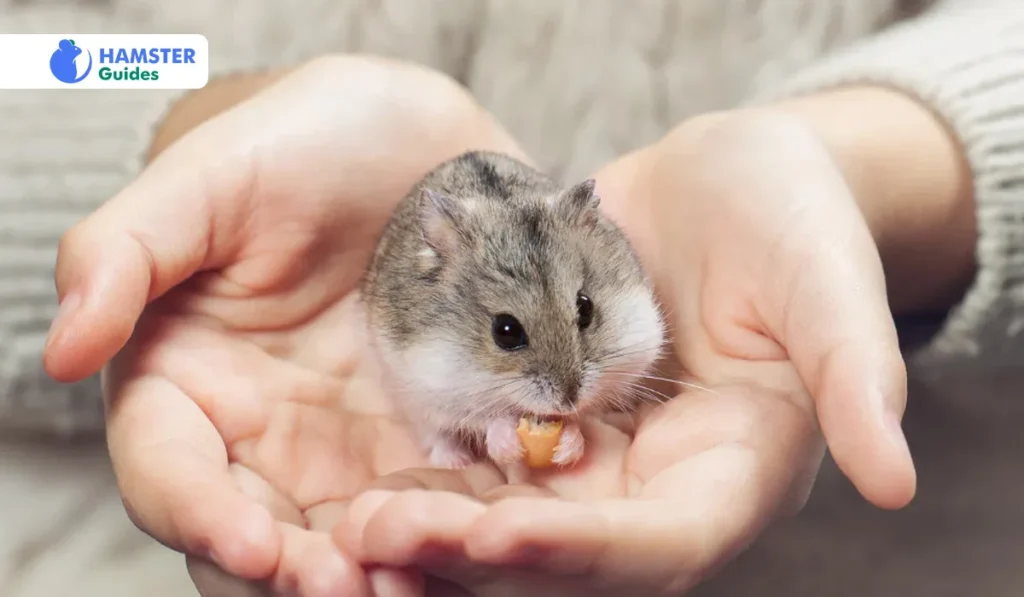
| Aspect | Information |
| Dental care | Provide chew toys and monitor tooth growth. Dental problems are common in dwarf hamsters. |
| Signs of illness | Check for symptoms such as lethargy, loss of appetite, or unusual behavior. |
| Veterinarian Care | Schedule regular veterinary check-ups for your small mammal/exotic animal. |
| Socialization | They can be sociable but may prefer a solitary life. Handle carefully to build trust. |
| Exercise | We may offer exercise options such as balance bikes and playpens for your daily activities. |
| Grooming Care | Dwarf hamsters are self-groomers. Brush gently from time to time as needed. |
Breeding of Grey Dwarf Hamsters
For a happy pet, you need to be careful about all instinctive behaviors. It is good to visit a nearby vet and get a thorough understanding of your hammie.
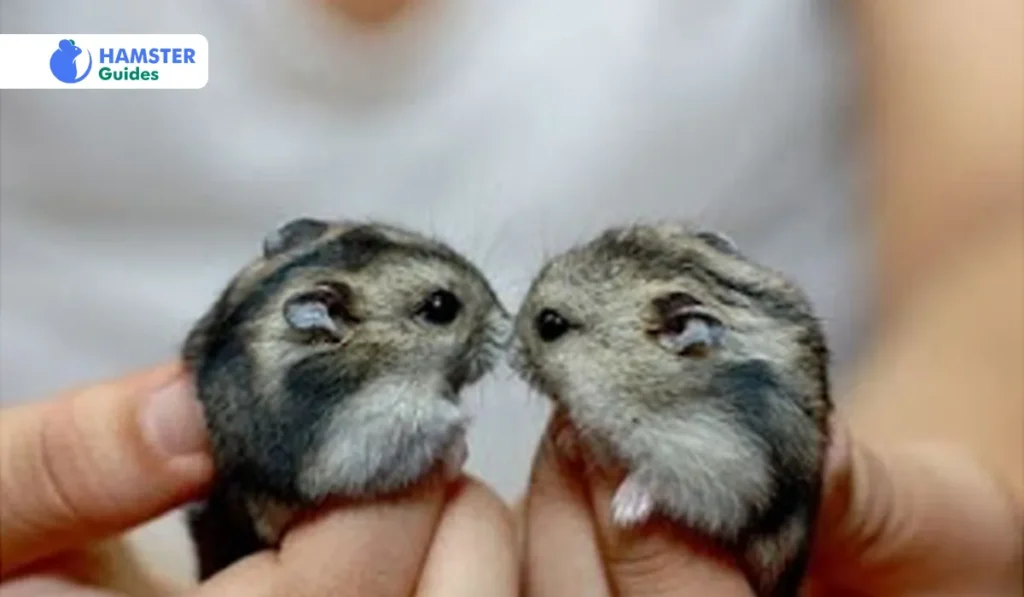
Following are some tips to consider:
Mating Habits
You should understand the mating habits and responsibilities associated with breeding Grey dwarf hamsters. It takes a Grey dwarf hamster four to six weeks to reach sexual maturity. A breeder with the required knowledge and resources should be allowed to manage the breeding process. Before breeding hamsters, it is important to plan carefully for any health complications that may arise.
Read More: How To Take Care Of A Hamster?
Caring for Newborns
A pregnant hamster or newborn pup should be cared for appropriately. It is important to provide a quiet and stress-free environment for pregnant hamsters. Once the pups are born, keep yourself away from the nest. Make sure that the mother has a sufficient supply of food and water. Observe the pup’s growth and separate them by gender before they reach sexual maturity to prevent unwanted pregnancies.
Read More: Do Hamsters Eat Their Babies?
Grey dwarf hamsters are excellent parents. They take good care of their offspring. However, if the mother is unable to give the child the care they need, intervention can be needed in certain situations.
Newborn care also involves providing a warm environment and hand-feeding milk to the pups. When the pups are in the growing stage, a close eye should be on their health and weight gain to ensure they grow appropriately.
The Final Words
The grey dwarf hamster is a resilient, burrowing species adapted to dry, seasonal climates. In captivity they thrive when owners replicate key features of their natural life: deep substrate for digging, quiet daytime conditions, nutritious food, and routine veterinary care.
A Grey dwarf hamster requires a lot of care and attention. To create a happy and fulfilling connection, take proper time to understand your pet. Fulfill their needs, provide appropriate care, and provide an organic environment. Once you’ve read this guide carefully, you’ll know exactly how to care for your Grey dwarf hamster.
Enjoy your time with your animal companion!
Related Questions









Leave a Reply